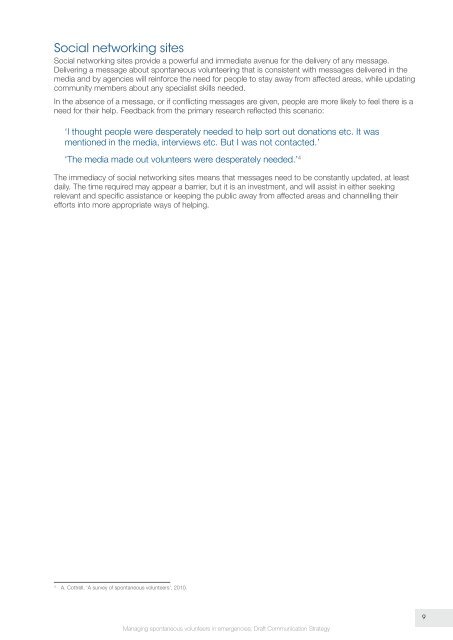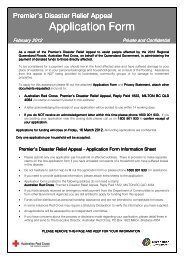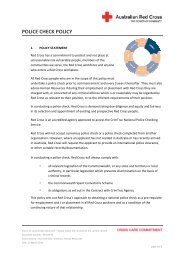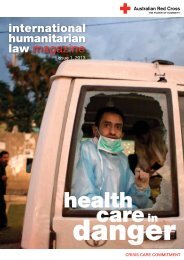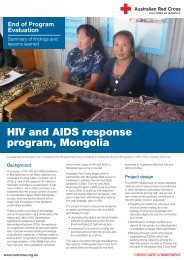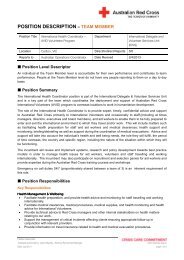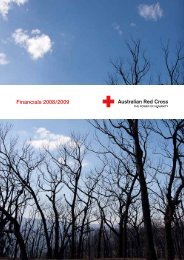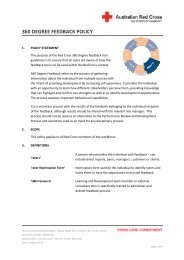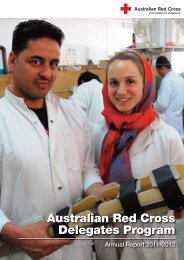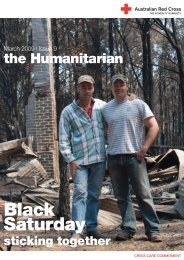Section 3: Draft Communication Strategy - Australian Red Cross
Section 3: Draft Communication Strategy - Australian Red Cross
Section 3: Draft Communication Strategy - Australian Red Cross
- No tags were found...
Create successful ePaper yourself
Turn your PDF publications into a flip-book with our unique Google optimized e-Paper software.
Social networking sitesSocial networking sites provide a powerful and immediate avenue for the delivery of any message.Delivering a message about spontaneous volunteering that is consistent with messages delivered in themedia and by agencies will reinforce the need for people to stay away from affected areas, while updatingcommunity members about any specialist skills needed.In the absence of a message, or if conflicting messages are given, people are more likely to feel there is aneed for their help. Feedback from the primary research reflected this scenario:‘I thought people were desperately needed to help sort out donations etc. It wasmentioned in the media, interviews etc. But I was not contacted.’‘The media made out volunteers were desperately needed.’ 4The immediacy of social networking sites means that messages need to be constantly updated, at leastdaily. The time required may appear a barrier, but it is an investment, and will assist in either seekingrelevant and specific assistance or keeping the public away from affected areas and channelling theirefforts into more appropriate ways of helping.4A. Cottrell, ‘A survey of spontaneous volunteers’, 2010.9Managing spontaneous volunteers in emergencies: <strong>Draft</strong> <strong>Communication</strong> <strong>Strategy</strong>


